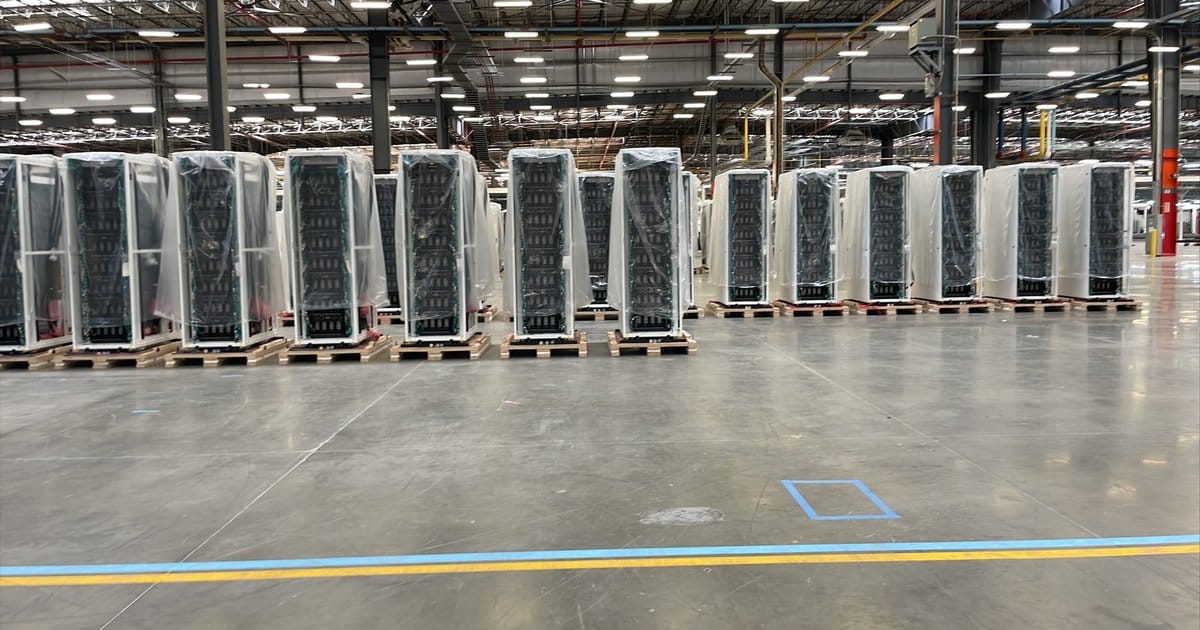xAI's Memphis Supercluster: A Game-Changer in the AI Race

In a bold move that has sent ripples through the tech industry, Elon Musk's artificial intelligence company, xAI, has unveiled its latest venture: the Memphis Supercluster. This cutting-edge AI training facility, located in Tennessee, represents a significant leap forward in computing power and positions xAI as a formidable contender in the rapidly evolving field of artificial intelligence.

The Hardware Behemoth
At the heart of the Memphis Supercluster lies an awe-inspiring array of 100,000 Nvidia H100 GPUs, all liquid-cooled and interconnected via a single RDMA (Remote Direct Memory Access) fabric. This configuration allows for unprecedented data transfer speeds between processing nodes, minimizing latency and maximizing efficiency. The sheer scale of this hardware deployment is staggering, with estimates placing the investment between $3 billion and $4 billion for the GPUs alone.
What's equally impressive is the speed at which this supercomputer was assembled. According to Musk, the entire setup was completed in a record-breaking 19 days, a feat he claims is unmatched in the industry. This rapid deployment underscores xAI's commitment to pushing the boundaries of what's possible in AI development.
Grok 3: The Next Frontier
With the Memphis Supercluster now operational, xAI has wasted no time in putting its immense computing power to use. The company has already begun training Grok 3, its latest large language model, with the ambitious goal of creating "the most powerful AI by every metric" by December 2024.
This aggressive timeline follows the upcoming release of Grok 2, scheduled for August after final fine-tuning and bug fixes. The rapid succession of model releases highlights xAI's determination to close the gap with established AI giants like OpenAI, Google, and Microsoft.
Economic Boom and Environmental Concerns
The launch of the Memphis Supercluster represents more than just a technological milestone; it's also a significant economic boon for the region. As the largest capital investment by a new-to-market company in Memphis, the project promises to create numerous high-tech jobs and attract further investment to the area.
However, this progress comes with environmental considerations. Local advocacy groups, such as the Memphis Community Against Pollution, have raised concerns about the facility's substantial energy and water requirements. The supercomputer is expected to consume at least one million gallons of water daily for cooling purposes, prompting calls for xAI to invest in sustainable solutions like wastewater reuse systems.
Reshaping the AI Landscape
The Memphis Supercluster represents a pivotal moment in the AI industry. With its unparalleled computing power, xAI is poised to accelerate the pace of AI development significantly. This could potentially lead to breakthroughs in various fields, from natural language processing to complex problem-solving.
Moreover, the project showcases the increasing competition in the AI sector. As companies like xAI invest heavily in infrastructure and talent, we can expect to see a surge in innovation and potentially faster progress towards artificial general intelligence (AGI).
How the Memphis Supercluster Contributes to Advancements in AI Technology
Elon Musk's xAI has launched the Memphis Supercluster, a state-of-the-art AI training facility that promises to revolutionize the field of artificial intelligence. This supercluster, equipped with 100,000 Nvidia H100 GPUs, represents a significant leap in computational power and efficiency, positioning xAI at the forefront of AI development.
Unprecedented Computational Power
The Memphis Supercluster is designed to perform extremely complex calculations at unprecedented speeds, thanks to its massive network of GPUs. The integration of 100,000 liquid-cooled Nvidia H100 GPUs on a single RDMA fabric allows for efficient data transfer and minimizes latency, which is crucial for training large AI models. This setup not only enhances the speed and efficiency of AI training but also reduces the time required to develop and deploy new AI technologies[1][2].
Accelerating AI Model Training
One of the primary contributions of the Memphis Supercluster is its ability to drastically reduce the time needed to train advanced AI models. For instance, the supercluster is currently being used to train Grok 3, xAI's latest large language model, with the goal of making it the most powerful AI by December 2024[4]. This rapid training capability is a game-changer, allowing xAI to release new models more frequently and stay competitive with other AI giants like OpenAI and Google[1][4].
Economic and Environmental Impact
The Memphis Supercluster also has significant economic implications. It represents the largest capital investment by a new-to-market company in Memphis, promising job creation and technological advancement in the region[3]. However, the facility's substantial energy and water consumption has raised environmental concerns. The supercluster requires up to 150 megawatts of electricity and at least one million gallons of water daily for cooling, prompting calls for sustainable practices such as wastewater reuse systems[6][7].
Strategic Advantages and Future Prospects
The selection of Memphis for this project was strategic, leveraging the city's access to power resources and the capacity for rapid construction. This location allows xAI to quickly scale up its operations and meet the growing demands of AI research and development[3]. The rapid setup of the supercluster—completed in just 19 days—demonstrates xAI's commitment to accelerating AI advancements and maintaining a competitive edge in the industry[4].
Collaborative Innovation
The Memphis Supercluster is a testament to the importance of collaboration in the AI industry. The project involves partnerships between xAI, Nvidia, and other supporting companies, pooling their expertise and resources to push the boundaries of AI research and development[5]. This collaborative approach not only enhances the capabilities of the supercluster but also sets a precedent for future AI infrastructure projects.
Looking Ahead
The Memphis Supercluster is poised to make significant contributions to the advancement of AI technology. Its unparalleled computational power, rapid model training capabilities, and strategic location underscore its potential to drive innovation in the field. While the project brings economic benefits, it also highlights the need for sustainable practices to mitigate its environmental impact. As xAI continues to develop and deploy advanced AI models, the Memphis Supercluster will play a crucial role in shaping the future of artificial intelligence.
By leveraging the immense capabilities of the Memphis Supercluster, xAI is well-positioned to lead the next wave of AI advancements, setting new standards for speed, efficiency, and innovation in the industry.
As the AI race intensifies, all eyes will be on xAI and the Memphis Supercluster. The success of this venture could reshape the competitive landscape, challenging the dominance of established players and potentially democratizing access to advanced AI capabilities.
However, as we marvel at these technological advancements, it's crucial to remain mindful of the broader implications. The environmental impact of large-scale AI infrastructure, ethical considerations in AI development, and the societal changes that may result from increasingly powerful AI systems are all factors that demand our attention.
The launch of the Memphis Supercluster marks not just a milestone for xAI, but a new chapter in the ongoing story of artificial intelligence. As we move forward, the balance between rapid technological progress and responsible, sustainable development will be more important than ever.





